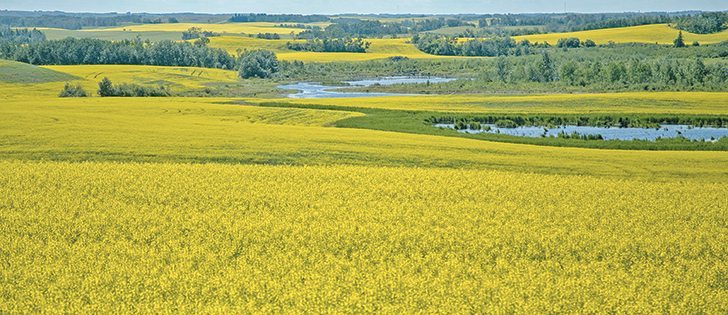The Canola Council of Canada wants to decrease its reliance on four key export customers.
Ninety percent of the country’s seed, oil and meal is exported, and 93 percent of that is shipped to the United States, China, Japan and Mexico.
“We’ve got a lot of eggs in one basket,” Bruce Jowett, the council’s vice-president of market development, told CropSphere 2015.
The council has set a goal of reducing the reliance on those four countries to 80 percent by 2025.
Jowett said it is too risky to have so much business tied up with four customers, particularly if a market access issue surfaces.
Read Also

Farming Smarter receives financial boost from Alberta government for potato research
Farming Smarter near Lethbridge got a boost to its research equipment, thanks to the Alberta government’s increase in funding for research associations.
That has occurred in recent years with China restricting canola seed imports because of concerns over blackleg disease and the U.S. curtailing meal shipments because of salmonella contamination.
The U.S. is the biggest market for canola products, buying $3.5 billion of oil and meal annually.
The first thing the council’s market development staff look for in a market is a high literacy rate, which means consumers can understand the message being delivered. The second thing is a market with health concerns so that the message resonates. The final component is the economic ability to spend more on canola oil.
The U.S. has all three of those attributes, which is why canola has become the No.2 oil behind a blended vegetable oil in a market of 320 million people.
Jowett said there is still room for that market to expand.
“There are some segments within the U.S. population that we have not reached,” he said.
Those segments are the African American community, which is expected to grow by 50 percent over the next decade, and the Hispanic community, which is forecast to double.
The U.S. also consumes 96 percent of Canada’s canola meal exports, or 3.3 million tonnes per year worth $1.4 billion annually.
Most of the meal is shipped to the dairy industry west of the Mississippi River, with California being the biggest market.
The council is focusing its market development efforts on the dairy industry east of the Mississippi and has made inroads in Wisconsin. It is also working with the U.S. hog and poultry sectors.
China is the second biggest export market for Canadian canola products, consuming $2.94 billion worth of seed and oil annually.
It is a “frustrating but promising” market of 1.35 billion people, which consumes 4.4 million tonnes of canola seed annually worth $2.2 billion.
The council’s market development work in that country is focused on Shanghai and Beijing, which have a combined population larger than all of Canada.
The council recently held a media event featuring council chair Terry Youzwa.
“They loved the opportunity to meet a real, true farmer. Farmers in China are held in high esteem,” Jowett said.
Media with a combined circulation of one billion people covered the event.
China is not a big buyer of canola meal, but it could become one once Canadian crushers meet the country’s new food safety regulations.
Japan is the longest standing export customer for the canola industry. It buys two million tonnes of seed annually, worth $1.23 billion, but no oil or meal.
Japanese consumers like the oil’s omega 3 attributes and its high smoke point.
“In Japan, your living quarters are quite tight. You live where you eat and you sleep where you eat and you don’t want the smell of dinner lingering around, so the smoke point has been a major selling point,” said Jowett.
However, the aging population is a concern.
“The challenge we see with Japan is that they’re not having enough babies,” he said.
Mexico buys $781 million worth of canola products annually, almost all of which is seed. It is a country of 116 million people, 40 million of which are the council’s target market.
In 2012, the World Health Organization gave Mexico the dubious distinction of being the most obese country. That prompted the government to place a tax on sugar products and require labels on food products that detail the amount of sodium, calories and fat.
Jowett said the mounting health concerns in Mexico represent a good marketing opportunity for canola, as does the country’s reliance on oil for food preparation.
The Mexican livestock industry understands the benefits of canola meal and wants more of the product, but it is too expensive to ship from Canada. The answer is to increase oil consumption and have Mexican crushers create more canola meal.
India is at the top of the list of what Jowett calls “wave two” countries. The vast majority of the country’s 1.3 billion people are more concerned about getting enough daily calories than they are about health issues.
There is a heavy reliance on palm oil and animal fat for cooking, which is why it is predicted that India will be home to 60 percent of the world’s cardiovascular disease cases by 2020.
The council is targeting the 200 to 250 million people in India’s growing middle class, which are concerned about their health. The campaign includes cardiologists, nutritionists and chefs spreading the word about the health benefits of switching to canola oil.
South Korea is another wave two country where the council is going to start “making some noise.”


















